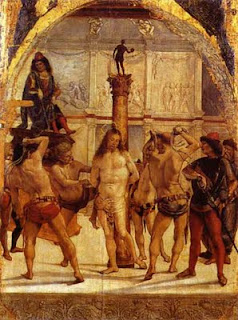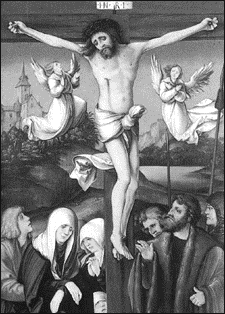So, today is, or (I suppose more accurately) would have been my 30th Wedding anniversary – had we stayed married. Yes, I was married, at the tender age of 21, to an even more tender 19 year old girl.
We married out of love. That I am sure of. We lived together, fairly unhappily, but with moments of real joy, for 12 years. She knew I was gay from the start. But we were brave, and young and we didn’t see why sexual orientation should get in the way of love. We went against best advice - and probably what is now called best practise - and we married, in a ceremony in the little Anglican Church where I had grown up, in Johannesburg. The flowers she carried were daffodils and I cannot see a bunch, still today, without remembering us then, and her beauty and youth and loveliness.
Her mother disapproved strongly. Her father was dead many years – not dead to her though. Her brothers and sisters were reluctant participants in the wedding – as were mine. I never really knew why they just seemed not to like me. I didn’t think it mattered much, but of course, it always does. My sister and I had a major fight the night before the wedding – but she came. My one brother, who has not spoken to me for going on 25 years now, and his purse-lipped wife, attended, then fled our lives forever. The other sent wishes.
We lived at a time of struggle. We got married in a vacation period, in the middle of my degree in Cambridge. Soon, I was to leave to finish the degree, and she was to remain behind, lonely, amongst the virtual strangers of my family – but still brave and still in love.
I had promised her that there would be men down the road of our life together. And there were. And she knew it. She thought she could cope with that, but it became clear fairly soon, that she could not. And so, my liaisons became more secretive, more closeted, more furtive as the years wore on.
We lived in a time of struggle and facing the call-up into the racist South African Army, we fled to neighbouring Lesotho, where we lived happily – probably the most happily - for 3 years. There we joined the banned African National Congress and worked underground. We saw death and destruction. We made lifelong friends. We changed from the narrow racist white South Africans that we were by birth, to liberated people. That is what Lesotho gave to us. A lifelong, precious gift.
Next we went to Britain, me as a priest, she as a teacher of English to foreign students. She met one who wanted to marry her. There was a secret romance. The problem, and perhaps the curiosity, was that he was Muslim. So, I was not alone. I have often revisited the moment I knew for sure that the romance was on (and I have no idea how far it went). Was I jealous? No, I was not. What was I? I was angry that I had not been told. That was the issue. That was the matter. That was the substance. And ever since, I have vowed never to do that to the person I am with.
And I must ask now, it is possible to live with someone, love them completely and yet have sex with others? And I must answer that I do believe it is possible. I don’t think it is easy, and I don’t think it is necessarily wise, but I do believe it is possible. And I would say to the church, so quick to judge perched, as it sees itself, on the Summit of Mount Integrity, that it is perfectly clear that monogamy is practised more in the breach than the observance. If we all just stopped the farce and admitted that, the debate would move ahead in leaps and bounds. We badly need another model. We need rational discussion about it, at the very least. Because, it seldom happens. And when it does, it just does. I see nothing morally superior in it. And if one is going to REALLY listen to gay and lesbians about their way of living this life, then the church needs not to exclude what, for many of them, is an extremely positive experience. But Ah! – I am just dreaming here. The church is frantically struggling just to accept gay and lesbian Christians as fellow sinners – let alone valuing and learning from their experience!
And so my wife and I struggled with living our lives together. There was a great deal against us. Her emotional condition was not stable and she seemed to fight the very things which would have made it more stable. I think I was too young, too full of testosterone, too impulsive – maybe even too selfish, to help her. But I have said, and not only once, that had we been more mature about things then, we would probably still be together. (And I would still be gay).
Silly, underexposed, people, with very little imagination ask me, when I tell them that I was once married to a woman, “But were you able to have sex?” Of course we were able to have sex. When you are young, it really doesn’t take very much doing. I don’t think I was bi-sexual. I think I was gay. Just married to a woman, that is all.
Getting divorced was not pleasant for either of us. I doubt it ever is. One of the abiding benefits for me was that I stopped smoking. Somehow, it was the divorce which enabled me to do it – I have no idea why. Another positive was that I realised I could not live under the cloak of lies which the church demanded from me any longer. I could not keep silent about who I was, and so the divorce carried through to the church as well. And I actively went about looking for a male life-partner. I advertised, and I found one. And it was a happy thing.
And so looking back, I ask myself, do I regret it? Do I regret spending 12 years of my life, married to a woman? I think there was a time when I did, but that was caused mostly, by hurt and anger. My hurt and anger. But that did stop. We both did find lives for ourselves. And, remarkably, we have managed to stay in contact.
First, that contact was openly combative. Then it was competitive. Then it was calmer. And now it is slightly guarded, but affectionate. There have been times, even, when it has been supportive and caring. I am extremely glad we have that. I am glad to be able to connect with someone, whether it be by text message, or by call, that knows those 12 years of my life, like no-one else. Someone who knows me, like nobody else, because of that. Someone who has had a profound effect on me, because of that. I am glad we did not have children, because then our continued contact would, in all probability, be involuntary.
And so, looking back, from the hindsight of some considerable history, I am glad to say that those 12 years are not years I regard with horror. More with pride and some healthy nostalgia. And I am glad that the springtime daffodils still remind me of her.









































